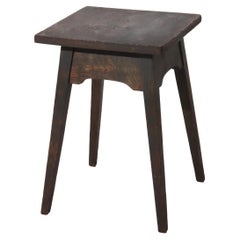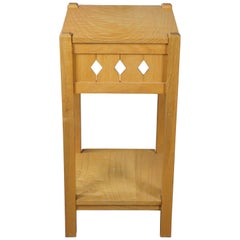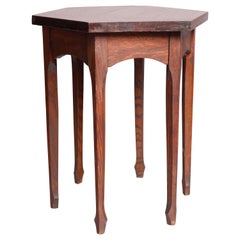Arts Crafts Taboret
20th Century Arts and Crafts Tables
Oak
Late 20th Century American Arts and Crafts Side Tables
Ash
Recent Sales
Early 20th Century Arts and Crafts End Tables
Oak
20th Century American Arts and Crafts Side Tables
Oak
20th Century American Arts and Crafts Tables
Oak
Early 20th Century American Arts and Crafts Side Tables
Oak, Leather
Early 20th Century American Arts and Crafts Stools
Oak
Mid-20th Century American Arts and Crafts Side Tables
Oak
20th Century American Arts and Crafts Side Tables
Oak
People Also Browsed
Antique 19th Century American Arts and Crafts Dining Room Tables
Oak
Early 20th Century American Arts and Crafts Bookcases
Brass
Early 20th Century American Arts and Crafts Rocking Chairs
Leather, Oak
Early 20th Century Arts and Crafts Cabinets
Oak
Vintage 1910s American Arts and Crafts Bookcases
Iron
Antique 1890s American Arts and Crafts Table Lamps
Brass
Antique Early 1900s English Arts and Crafts Decorative Art
Copper
Early 20th Century American Arts and Crafts Desks
Copper
Antique 1890s English Arts and Crafts Pedestals
Oak
Early 20th Century American Arts and Crafts Desks and Writing Tables
Copper
Antique Early 1900s English Arts and Crafts Dining Room Tables
Oak
Early 20th Century American Arts and Crafts Desks and Writing Tables
Copper
Vintage 1910s American Arts and Crafts Desks
Iron
Early 20th Century American Arts and Crafts Desks and Writing Tables
Copper
Antique Early 1900s English Arts and Crafts Lanterns
Copper
Vintage 1920s English Arts and Crafts Side Tables
Oak
A Close Look at Arts-and-crafts Furniture
Emerging in reaction to industrialization and mass production, the Arts and Crafts movement celebrated handcrafted design as a part of daily life. The history of Arts and Crafts furniture has roots in 1860s England with an emphasis on natural motifs and simple flourishes like mosaics and carvings. This work is characterized by plain construction that showcases the hand of the artisan.
The earliest American Arts and Crafts furniture dates back to the start of the 20th century. Designers working in this style in the United States initially looked to ideas put forth by The Craftsman, a magazine published by Wisconsin native Gustav Stickley, a furniture maker and founder of the Craftsman style. Stickley’s furniture was practical and largely free of ornament. His Craftsman style drew on French Art Nouveau as well as the work he encountered on his travels in England. There, the leading designers of the Arts and Crafts movement included William Morris, who revived historical techniques such as embroidery and printed fabrics in his furnishings, and Charles Voysey, whose minimal approach was in contrast to the ornamentation favored in the Victorian era.
American Arts and Crafts work would come to involve a range of influences unified by an elevation of traditional craftsmanship. The furniture was often built from sturdy woods like oak and mahogany while featuring details such as inlaid metal, tooled leather and ceramic tiles. The style in the United States was led by Stickley, whose clean-lined chairs and benches showcased the grain of the wood, and furniture maker Charles Rohlfs, who was informed by international influences like East Asian and French Art Nouveau design.
Hubs in America included several utopian communities such as Rose Valley in Pennsylvania and the Byrdcliffe Arts and Crafts Colony in New York, where craftspeople made furniture that prioritized function over any decoration. Their work would influence designers and architects including Frank Lloyd Wright, who built some of the most elegant and iconic structures in the United States and likewise embraced a thoughtful use of materials in his furniture.
Find antique Arts and Crafts chairs, tables, cabinets and other authentic period furniture on 1stDibs.
Finding the Right Tables for You
The right vintage, new or antique tables can help make any space in your home stand out.
Over the years, the variety of tables available to us, as well as our specific needs for said tables, has broadened. Today, with all manner of these must-have furnishings differing in shape, material and style, any dining room table can shine just as brightly as the guests who gather around it.
Remember, when shopping for a dining table, it must fit your dining area, and you need to account for space around the table too — think outside the box, as an oval dining table may work for tighter spaces. Alternatively, if you’ve got the room, a Regency-style dining table can elevate any formal occasion at mealtime.
Innovative furniture makers and designers have also redefined what a table can be. Whether it’s an unconventional Ping-Pong table, a brass side table to display your treasured collectibles or a Louis Vuitton steamer trunk to add an air of nostalgia to your loft, your table can say a lot about you.
The visionary work of French designer Xavier Lavergne, for example, includes tables that draw on the forms of celestial bodies as often as they do aquatic creatures or fossils. Elsewhere, Italian architect Gae Aulenti, who looked to Roman architecture in crafting her stately Jumbo coffee table, created clever glass-topped mobile coffee tables that move on bicycle tires or sculpted wood wheels for Fontana Arte.
Coffee and cocktail tables can serve as a room’s centerpiece with attention-grabbing details and colors. Glass varieties will keep your hardwood flooring and dazzling area rugs on display, while a marble or stone coffee table in a modern interior can showcase your prized art books and decorative objects. A unique vintage desk or writing table can bring sophistication and even a bit of spice to your work life.
No matter your desired form or function, a quality table for your living space is a sound investment. On 1stDibs, browse a collection of vintage, new and antique bedside tables, mid-century end tables and more .
- 1stDibs ExpertAugust 15, 2019
The Arts and Crafts Movement was an era of design that originated in England during the last quarter of the 19th century. The movement celebrated traditional craftsmanship by way of simple forms and the use of romantic, medieval or folk styles of decoration.
- 1stDibs ExpertNovember 4, 2024To identify Arts and Crafts furniture, first see if you can locate a maker's mark on your piece. By researching any marks using trusted online resources, you can determine who produced your piece and find out if the maker was linked with the Arts and Crafts movement. Some notable makers associated with the style include William Morris and Philip Webb. If you can't find a maker's mark, examine the details of your piece. The Arts and Crafts movement began as a reaction to mass production, highlighting craftsmanship, raw materials and simple design. Due to its handcrafted origins, Arts and Crafts furniture often displays tool marks and slight variations in carvings and details. Pieces so regular that they seem machine-made are less likely to be Arts and Crafts furniture. Other common characteristics of Arts and Crafts pieces include inlaid and carved details and natural wood materials with visible grains. Chairs often feature reclining or angled backs and armrests. If you'd like assistance determining whether a particular piece is Arts and Crafts, consider consulting a certified appraiser or experienced antique dealer. On 1stDibs, explore a range of Arts and Crafts furniture.
- 1stDibs ExpertAugust 15, 2024To identify Arts and Crafts furniture, look for characteristics that are hallmarks of the style. The Arts and Crafts movement began as a reaction to mass production, highlighting craftsmanship, raw materials and simple design. Makers working in this style placed an emphasis on natural motifs and adorned their pieces with simple flourishes like mosaics and carvings. This work is characterized by plain construction that showcases the hand of the artisan. Arts and Crafts furniture was often built from sturdy woods like oak and mahogany while featuring details such as inlaid metal, tooled leather and ceramic tiles. The style in the United States was led by Gustav Stickley, whose clean-lined chairs and benches showcased the grain of the wood, and furniture maker Charles Rohlfs, who was informed by international influences like East Asian and French Art Nouveau design. If you need help identifying the style of your furniture, a certified appraiser or knowledgeable antique dealer can be of assistance. Find a diverse assortment of Arts and Crafts furniture on 1stDibs.



